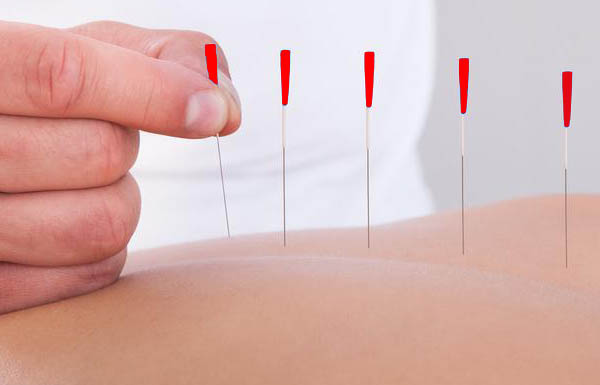Dry needling is a modern manual treatment used for pain and movement impairments by releasing myofascial tension, hence freeing up range of motion and providing pain relief. This treatment uses thin monofilament needles similar to that used in acupuncture. The technique of dry needling is to use a “dry” needle, one without medication or injection, inserted through the skin into dysfunctional muscle tissue.
Although comparisons are often made between the two, dry needling and acupuncture are very different methods of treatment. Dry needling is utilized to cure physical maladies, and the needling is performed in and around the problematic muscle tissue.
How does it work?
Dry needling is the technique of inserting small needles into the pain epicenter of a specific muscle. These epicenters are commonly known as myofacial trigger points, or simply trigger points. Trigger points often present as muscle “knots,” and are the cause of great muscle tension and often pain. Dry needling in and around these trigger points causes a reaction wherein the muscle will twitch, then relax. This relaxation of the muscle loosens it, alleviates pain, and allows for greater mobility throughout the healing process.
When is it an effective treatment?
While dry needling is certainly not included in every physical therapy treatment plan, in about 90% of cases it can prove very beneficial. In general, this technique is used as part of a larger treatment plan. It serves as a way to free up muscle tension to allow greater range of motion for manipulative therapy, and to speed along the recovery of a muscle dysfunction. Dry needling proves beneficial in most cases, and is especially useful in aiding recovery from chronic and acute strains and sprains, as well as recovering range of motion post-surgery.
Why do we utilize dry needling in our treatment plans?
Ultimately, our goal as physical therapists is to provide a treatment plan that reduces pain, improves function and supports recovery as quickly as possible. By releasing tension and discomfort in a muscle through dry needling, it not only provides short-term relief to the patient, but it allows for easier manipulation of the dysfunctional muscle tissue throughout the treatment process. In most cases, dry needling is a quick and effective method to reinstate a muscle’s functionality. In certain cases, dry needling has been known to create a healing response in chronic dysfunctional tissue.
Manchester:
(603) 222-7000
Londonderry:
(603) 421-1177

